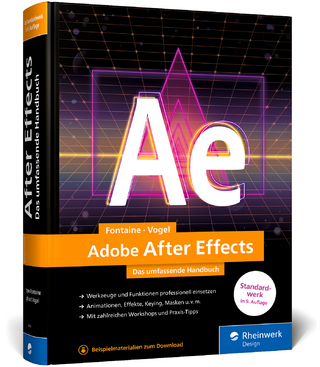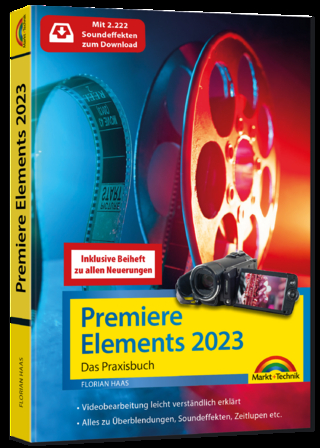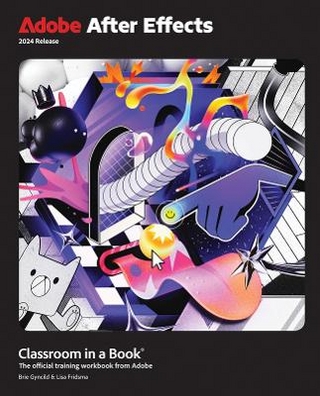
The Computer Animator's Technical Handbook
Morgan Kaufmann Publishers In (Verlag)
978-0-12-558821-8 (ISBN)
- Titel ist leider vergriffen;
keine Neuauflage - Artikel merken
This is a complete, in-depth reference that will be of enormous value to anyone in the computer animation field-from students to established professionals to the many traditional animators who find themselves drawn to the computer-based world. The Computer Animator's Technical Handbook distinguishes itself by giving full attention to the motion that defines animation (as opposed to the modeling that produces the still image) and the often-neglected production processes that make it possible. The work of two widely recognized computer animation experts, this book is destined to become the standard reference for professionals throughout the industry and a popular text in classrooms.
Lynn Pocock is an artist and an Associate Professor of Fine Arts and Coordinator of Computer Graphics at New York Institute of Technology. Her art and research have been published in scholarly journals such as Leonardo and The Art Journal. Pocock has been exhibited internationally, including at the New York Film and Video Expo, the London International Film Festival, and SIGGRAPH's Animation Theater and Art Show. She is Vice Chair of the NYC SIGGRAPH Board of Directors and the Conference Chair of the SIGGRAPH 2001 conference in Los Angeles. Judson Rosebush is a director and producer of multimedia products and computer animation, an author, artist and media theorist. He completed his first computer animations in 1970 and founded Digital Effects Inc. in 1978, the first digital computer animation company in New York City. Rosebush is the co-author of Computer Graphics for Designers and Artists, published by Van Nostrand Reinhold Co., and co-author of Electronic Publishing on CD-ROM, published by O'Reilly & Associates, Inc. He has exhibited his computer generated drawings and films in numerous museum shows, and the drawings have been reproduced in hundreds of magazines and books, prompting speaking engagements as a national ACM lecturer.
A Note from the Series Editor;; Brian A. Barsky, University of California, Berkeley; Foreword; Glenn Entis, Electronic Arts; Preface; Introduction; Chapter 1 - Digital Pictures; Progression of Dimensions; and Coordinate Systems; Digital Images; 2D Computer Imaging; 3D Computer Modeling; Chapter 2 - Anatomy of Time; Time; Representing Time in Words; Continuous and Discrete Time; Media: Recording Time-Based Events; Normalized and Center-Unity Time; Absolute and Relative Time; Nested, Local, and Global Time; Fundamental Temporal Operations; Chapter 3 - The Science of Moving Pictures; The Search for Terminology; Media; Fundamentals of Lensed Imaging; Recording and Playback; Continuous and Discrete Representation; Persistence of Vision; Stroboscope Principles; Aliasing and Anti-Aliasing; Chapter 4 - The Mechanics of Film; The Photographic Camera; Photographic (Film) Media; Cyclic Motion Picture Recording and Projection; Roll Media Recording and Projection; The Shuttle and Intermittent Movement of Media; Camera Movement; The Moving Picture Projector; System Resolution; Chapter 5 - The Electronics of Video; The Principles of Raster Scanning; Electronic Output Displays; Electronic Image Input Devices; Electronic Television Standards; Raster Images, Fields, Interlacing, and the Video Shutter; Video Waveform Structure; Video Time Code; Color; High-Definition Television; Video Formats, Recording Technologies, and Defining Characteristics; Chapter 6 - Digital Temporal Imaging; Digital Imaging; Digital Input and Output Devices; The Frame Buffer and Color Lookup Table; The Virtual Camera; Bandwidth; Formal Aspects of Digital Images; Pixel Aspect Ratio; Compression; Desktop and Streaming Video; Digital Media; Chapter 7 - Intermixing Media; Issues of Preference-Film versus Video; Conversions Between Media; Production Flow; Chapter 8 - Animation Methods and Tools; Fields and Field Guides; Safeties; Registration Systems; The Animation Stand; Cutouts and the Slash System; Pan and Scan: Zooms, Pans, Spins; Scalingx; Animating on Twos; Staggers; Color Table Animation; Scratchon; Shape Definition; Morphing; Onionskinning; 3D Animation Methods; The Integration of Two and Three Dimensions in Computer Animation; Chapter 9 - The Cel System; Cel Animation; Action Technologies; Computer-Mediated Cel Animation; Cel Production; Chapter 10 - Motion Pathways, Key Frame Animation, and Easing; Some Basic Definitions; Motion Pathways; Straight-Ahead Animation; Key Frame Animation; Easing; Chapter 11 - Kinematic Motion and Mechanisms; Links, Joints, and Chains; The Kinematic Model; Forward Kinematics; Inverse Kinematics; Constraints; Chapter 12 - Dynamic and Behavioral Modeling; Force and Dynamics; The Basics of Force; Relevant Terms; Types of Force; Behavioral Systems; Dynamics and Computer Animation Programs; Chapter 13 - Digital Special Effects; Non-Real-Time Live Action; Optical Effects; The Optical Bench; Motion Control; Motion Graphics; Tracking Systems; Digital Effects; Chapter 14 - Animation Languages; The Language of Moving Pictures; The Languages of Computer Animation; Chapter 15 - The Production Process; Preproduction; Production; Postproduction; Production Staffing Model; Afterword; Recommended Reading; Index; Art Credits; About the Authors
| Erscheint lt. Verlag | 14.8.2001 |
|---|---|
| Reihe/Serie | The Morgan Kaufmann Series in Computer Graphics |
| Zusatzinfo | colour and b&w illustrations |
| Verlagsort | San Francisco |
| Sprache | englisch |
| Maße | 178 x 235 mm |
| Gewicht | 1295 g |
| Themenwelt | Informatik ► Grafik / Design ► Film- / Video-Bearbeitung |
| ISBN-10 | 0-12-558821-6 / 0125588216 |
| ISBN-13 | 978-0-12-558821-8 / 9780125588218 |
| Zustand | Neuware |
| Informationen gemäß Produktsicherheitsverordnung (GPSR) | |
| Haben Sie eine Frage zum Produkt? |
aus dem Bereich


